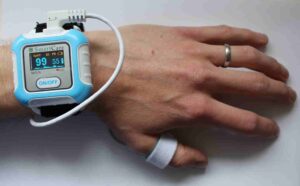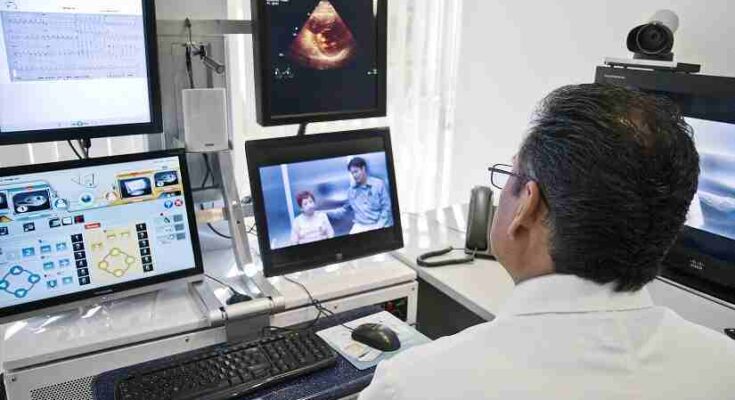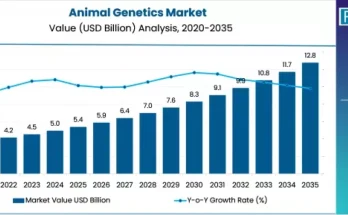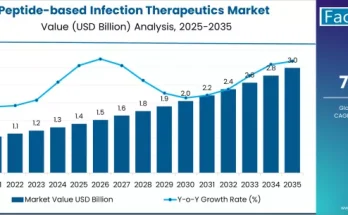Introduction
Remote Patient Monitoring (RPM) is revolutionizing the healthcare industry by enabling healthcare providers to monitor patients outside traditional clinical settings. This innovative approach enhances patient care, reduces healthcare costs, and improves patient outcomes. Let’s dive into the world of RPM devices, explore their evolution, and examine the factors driving their sales growth.
What is Remote Patient Monitoring?
Remote Patient Monitoring (RPM) involves the use of technology to monitor patients’ health data from a distance. Key components of RPM systems include sensors, wearable devices, data storage, and communication systems that transmit health data to healthcare providers in real-time.
How Remote Patient Monitoring (RPM) Works?
RPM devices collect health metrics such as heart rate, blood pressure, glucose levels, and more. This data is transmitted wirelessly to healthcare providers, who can analyze the information and make timely medical decisions. Patients can stay at home while receiving continuous care, enhancing their comfort and reducing hospital visits.
The Evolution of RPM Devices
The concept of RPM isn’t new, but its practical application has evolved significantly. Early attempts at remote monitoring were rudimentary, limited by technology and connectivity issues.
Technological Advancements
Advancements in wireless communication, sensor technology, and data analytics have propelled RPM devices to new heights. Today, RPM devices are more accurate, reliable, and user-friendly than ever before.
Types of Remote Patient Monitoring Devices
Wearable Devices
Wearable devices, such as smartwatches and fitness trackers, have become central to the RPM landscape. These devices are designed to continuously monitor vital signs, physical activity, and other health metrics. The growing demand for Remote Patient Monitoring devices has led to a surge in sales, driven by their role in chronic disease management and telehealth integration. Wearable devices like continuous glucose monitors (CGMs), blood pressure monitors, and pulse oximeters provide real-time remote data collection, essential for managing chronic conditions and improving patient outcomes.
This technology is especially beneficial for the aging population, as it supports preventative healthcare and enhances medication adherence. The Remote Patient Monitoring market size for wearable devices is expected to grow significantly due to their cost-effective care solutions and the shift towards value-based healthcare.
Implantable Devices
Implantable devices are another crucial category within the RPM industry. These devices are surgically placed inside the patient’s body to monitor specific health conditions continuously. For instance, cardiac monitors track heart rhythms and detect irregularities. The market growth for implantable RPM devices is fueled by the increasing prevalence of chronic conditions such as cardiovascular diseases.
Implantable devices play a vital role in population health management by providing continuous, accurate data that helps in early intervention and reduces hospital readmissions. This contributes to the overall Remote Patient Monitoring market growth as healthcare providers increasingly adopt these devices for their value in delivering cost-effective, high-quality care.
Mobile Apps and Software Platforms
Mobile apps and software platforms are essential components of the RPM ecosystem. These tools facilitate remote patient engagement and patient activation by allowing individuals to manually enter health data, receive alerts and reminders, and communicate with healthcare providers. The integration of mobile health technology with RPM devices enhances chronic care management and supports value-based payment models.
Digital therapeutics delivered via mobile platforms can help manage conditions like diabetes and hypertension, contributing to better health outcomes. As the demand for Remote Patient Monitoring devices continues to rise, the market size for mobile apps and software platforms is also expanding, driven by the need for seamless telehealth integration and improved patient compliance.
Key Features of Remote Patient Monitoring (RPM) Devices
Real-Time Data Collection
RPM devices collect data continuously, ensuring that healthcare providers have up-to-date information to make informed decisions.
Wireless Connectivity
Wireless technology enables seamless data transmission from patients to healthcare providers, facilitating timely interventions.
User-Friendly Interfaces
Modern RPM devices are designed with user-friendly interfaces, making them accessible to patients of all ages and tech proficiency levels.
According to Latest Report, the remote patient monitoring device market is projected to reach US$ 1,502.9 million in 2024, signifying a promising CAGR of 6.7% through 2034.
Benefits of Remote Patient Monitoring Devices
Improved Patient Outcomes
The use of RPM devices significantly enhances patient outcomes by providing continuous monitoring and early detection of health issues. For example, wearable devices such as continuous glucose monitors (CGMs) and blood pressure monitors allow for real-time tracking of chronic conditions like diabetes and hypertension. This continuous data flow enables healthcare providers to intervene promptly, preventing complications and hospitalizations. The integration of mobile health technology and digital therapeutics further supports patient activation, encouraging individuals to engage actively in their health management.
Reduced Healthcare Costs
RPM offers a cost-effective solution by minimizing the need for frequent in-person visits and hospital stays. With the adoption of remote patient monitoring platforms, healthcare providers can monitor patients remotely, reducing the burden on healthcare facilities and lowering overall healthcare expenses. This approach aligns with value-based healthcare models, where the focus is on delivering high-quality care while controlling costs. The ROI (Return on Investment) for RPM is evident as it reduces emergency room visits and readmissions, making it a financially viable option for both providers and patients.
Enhanced Patient Engagement
RPM devices foster enhanced patient engagement by providing individuals with direct access to their health data and empowering them to take charge of their health. Devices like smart inhalers and pulse oximeters enable patients to monitor respiratory health and make informed decisions about their care. The use of remote data collection tools supports telehealth adoption, allowing patients to communicate seamlessly with their healthcare providers. This increased engagement leads to better medication adherence and chronic care management, improving overall health outcomes and patient satisfaction.
Comprehensive Chronic Disease Management
RPM plays a crucial role in managing chronic diseases by enabling continuous monitoring and personalized care plans. For instance, cardiovascular health can be closely monitored using wearable devices that track heart rate and activity levels. Similarly, diabetes monitoring through CGMs provides real-time glucose data, helping patients maintain optimal blood sugar levels. The integration of RPM with healthcare IT systems facilitates remote patient engagement and supports population health management, addressing the needs of an aging population. By offering preventative healthcare and timely interventions, RPM contributes to improved quality of life for individuals with chronic conditions.
Challenges in the RPM Industry
Data Security and Privacy Concerns
The transmission of sensitive health data raises significant security and privacy concerns that must be addressed through robust security measures.
Integration with Existing Healthcare Systems
Seamlessly integrating RPM devices with existing healthcare systems can be challenging but is crucial for their effectiveness.
Patient Compliance and Trust
Ensuring patient compliance with using RPM devices and building trust in the technology are essential for its success.
Market Trends and Growth Factors
Increasing Prevalence of Chronic Diseases
The rising prevalence of chronic diseases like diabetes and hypertension drives the demand for RPM devices, as they facilitate continuous monitoring and management.
Aging Population
An aging population requires more frequent health monitoring, making RPM devices an essential tool for elderly care.
Technological Innovations
Ongoing technological innovations in sensors, connectivity, and data analytics continue to drive the growth of the RPM market.
Sales Growth in the RPM Industry
Current Market Size and Forecast
The RPM market was valued at US$ 1,762.4 million in 2022 and is projected to reach US$ 2,476.8 million by 2032, with a CAGR of 3.5%.
Key Players and Market Share
Major players in the RPM industry include Medtronic, Philips Healthcare, and GE Healthcare. These companies hold significant market shares due to their advanced product offerings and extensive distribution networks.
Regional Market Analysis
North America and Europe dominate the RPM market, driven by high healthcare spending and advanced healthcare infrastructure. However, Asia-Pacific is emerging as a lucrative market due to increasing healthcare awareness and adoption of technology.
Get a sample of the detailed analysis report
Impact of COVID-19 on the RPM Industry
Accelerated Adoption During the Pandemic
The COVID-19 pandemic accelerated the adoption of RPM devices as healthcare providers sought ways to monitor patients remotely and reduce the risk of virus transmission.
Long-Term Effects on Market Growth
The increased awareness and acceptance of RPM during the pandemic are expected to have long-term positive effects on market growth, as both providers and patients recognize the benefits of remote monitoring.
Regulatory Environment and Standards
Key Regulatory Bodies
Regulatory bodies like the FDA in the United States and the EMA in Europe play crucial roles in ensuring the safety and efficacy of RPM devices.
Compliance Requirements and Standards
Compliance with regulatory standards is essential for the approval and commercialization of RPM devices, ensuring they meet safety and performance criteria.
Future Prospects of the RPM Industry

Emerging Technologies
Emerging technologies such as artificial intelligence and machine learning are expected to enhance the capabilities of RPM devices, making them more predictive and personalized.
Also Read: Advancements in Insulin Pump Technology Transforming Diabetes Management
Potential Market Opportunities
The growing demand for telehealth services and the expansion of healthcare infrastructure in developing regions present significant market opportunities for RPM devices.
Predictions for the Next Decade
Over the next decade, the RPM industry is expected to witness substantial growth, driven by technological advancements, increasing chronic disease prevalence, and the aging population.
Get a customized copy of the strategic analysis
Case Studies
Success Stories of RPM Implementation
Several healthcare providers have successfully implemented RPM programs, resulting in improved patient outcomes and reduced healthcare costs. For example, a major hospital in the U.S. reported a 30% reduction in hospital readmissions after implementing an RPM program for heart failure patients.
Real-World Examples and Outcomes
Real-world examples of RPM implementation highlight its effectiveness. For instance, patients with chronic conditions using RPM devices have shown better adherence to treatment plans and improved health metrics.
Tips for Choosing RPM Devices
Key Considerations for Healthcare Providers
Healthcare providers should consider factors such as device accuracy, ease of integration, and patient compliance when choosing RPM devices.
Factors for Patients to Consider
Patients should look for user-friendly interfaces, reliable connectivity, and data security features when selecting RPM devices.
Conclusion
The remote patient monitoring device industry is at the forefront of transforming healthcare delivery. With its ability to improve patient outcomes, reduce healthcare costs, and enhance patient engagement, RPM is set to play a crucial role in the future of healthcare. As the industry continues to grow, the potential for RPM devices to revolutionize patient care is immense, driven by technological advancements and increasing demand.
FAQs
What is remote patient monitoring?
Remote patient monitoring (RPM) is the use of technology to monitor patients’ health data from a distance, allowing healthcare providers to track and manage patient health outside traditional clinical settings.
How do RPM devices improve patient care?
RPM devices improve patient care by providing continuous monitoring, enabling early detection of health issues, and facilitating timely medical interventions, which lead to better health outcomes.
What are the main challenges in the RPM industry?
The main challenges in the RPM industry include data security and privacy concerns, integration with existing healthcare systems, and ensuring patient compliance and trust in the technology.
How has COVID-19 affected the RPM market?
The COVID-19 pandemic has accelerated the adoption of RPM devices as healthcare providers sought ways to monitor patients remotely and reduce the risk of virus transmission, leading to increased awareness and acceptance of RPM technology.
What should patients look for in RPM devices?
Patients should look for RPM devices with user-friendly interfaces, reliable connectivity, accurate data collection, and strong data security features to ensure effective and secure monitoring.
Follow us for the latest analysis:



